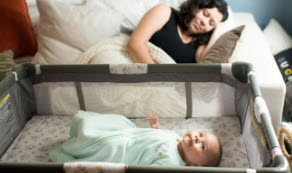

Room-sharing, but not bed-sharing, is another key safe sleep guideline. Keeping the baby’s crib in the same room as the parents for at least the first six to twelve months has been shown to decrease the risk of SIDS by as much as 50%. This allows for easier monitoring of the baby without the added risk that comes with bed-sharing, which can lead to accidental suffocation.
Additionally, using a pacifier during naps and nighttime sleep has been associated with a lower risk of SIDS, though it should not be forced if the baby does not want it. It’s also important to maintain a smoke-free environment, as exposure to secondhand smoke has been linked to a higher risk of SIDS.
Educating caregivers about these guidelines is essential for reducing sleep-related infant deaths. By adhering to safe sleep practices, parents and caregivers can create a safer sleep environment, helping to protect children during their most critical stages of development.
Resources
For more information about Safe Sleep, check out the website for the National Institutes of Health, https://safetosleep.nichd.nih.gov/
Parents
Parents want to know that their children are eating well, getting along with others, having fun, and perhaps, most importantly, safe while they are in someone else’s trusted care. When it comes to safe sleep practices, providers are highly trained to ensure sleep times are in safe environments. Click here to read more about the requirements child care providers are trained in.
If you are a Provider, email workshops@childaction.org to be registered for one of the four Safe Sleep trainings we are offering this year. CAI will host a discussion on Safe Sleep Environment regulations and best practices to reduce the risk of Sudden Infant Death Syndrome (SIDS) on October 24. Parents are welcome to join. Click here to learn more.
